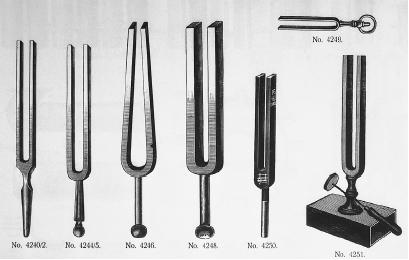Interference - How it works
Waves
Whenever energy ripples through space, there is a wave. In fact, wave motion can be defined as a type of harmonic motion (repeated movement of a particle about a position of equilibrium, or balance) that carries energy from one place to another without actually moving any matter. A wave on the ocean is an example of a mechanical wave, or one that involves matter; but though the matter moves in place, it is only the energy in the wave that experiences net movement.
Wave motion is related to oscillation, a type of harmonic motion in one or more dimensions. There is one critical difference, however: oscillation involves no net movement, only movement in place, whereas the harmonic motion of waves carries energy from one place to another. Yet, individual waves themselves are oscillating even as the overall wave pattern moves.
A transverse wave forms a regular up-and-down pattern in which the oscillation is perpendicular to the direction the wave is moving. Ocean waves are transverse, though they also have properties of longitudinal waves. In a longitudinal wave, of which a sound wave is the best example, oscillation occurs in the same direction as the wave itself.
PARAMETERS OF WAVE MOTION.
Some waves, composed of pulses, do not follow regular patterns. However, the waves of principal concern in the present context are periodic waves, ones in which a uniform series of crests and troughs follow each other in regular succession. Periodic motion is movement repeated at regular intervals called periods. In the case of wave motion, a period (represented by the symbol T ) is the amount of time required to complete one full cycle of the wave, from trough to crest and back to trough.
Period can be mathematically related to several other aspects of wave motion, including wave speed, frequency, and wavelength. Frequency (abbreviated f ) is the number of waves passing through a given point during the interval of one second. It is measured in Hertz (Hz), named after nineteenth-century German physicist Heinrich Rudolf Hertz (1857-1894), and a Hertz is equal to one cycle of oscillation per second. Higher frequencies are expressed in terms of kilohertz (kHz; 10 3 or 1,000 cycles per second) or megahertz (MHz; 10 6 or 1 million cycles per second.) Wavelength (represented by the symbol abbreviated λ, the Greek letter lambda) is the distance between a crest and the adjacent crest, or a

Another parameter for describing wave motion—one that is mathematically independent from the quantities so far described—is amplitude, or the maximum displacement of particles from a position of stable equilibrium. For an ocean wave, amplitude is the distance from either the crest or the trough to the level that the ocean would maintain if it were perfectly still.
Superposition and Interference
SUPERPOSITION.
The principle of superposition holds that when several individual but similar physical events occur in close proximity, the resulting effect is the sum of the magnitude of the separate events. This is akin to the popular expression, "The whole is greater than the sum of the parts," and it has numerous applications in physics.
Where the strength of a gravitational field is being measured, for instance, superposition dictates that the strength of that field at any given point is the sum of the mass of the individual particles in that field. In the realm of electromagnetic force, the same statement applies, though the units being added are electrical charges or magnetic poles, rather than quantities of mass. Likewise, in an electrical circuit, the total current or voltage is the sum of the individual currents and voltages in that circuit.
Superposition applies only in equations for linear events—that is, phenomena that involve movement along a straight line. Waves are linear phenomena, and, thus, the principle describes the behavior of all waves when they come into contact with one another. If two or more waves enter the same region of space at the same time, then, at any instant, the total disturbance produced by the waves at any point is equal to the sum of the disturbances produced by the individual waves.
INTERFERENCE.
The principle of superposition does not require that waves actually combine; rather, the net effect is as though they were combined. The actual combination or joining of two or more waves at a given point in space is called interference, and, as a result, the waves produce a single wave whose properties are determined by the properties of the individual waves.
If two waves of the same wavelength occupy the same space in such a way that their crests and

It is also possible that two or more waves can come together such that the trough of one meets the crest of the other, or vice versa. In this case, what happens is destructive interference, and the resulting amplitude is the difference between the values for the individual waves. If the waves are perfectly unaligned—in other words, if the trough of one exactly meets the crest of the other—their amplitudes cancel out, and the result is no wave at all.
Resonance
It is easy to confuse interference with resonance, and, therefore, a word should be said about the latter phenomenon. The term resonance describes a situation in which force is applied to an oscillator at the point of maximum amplitude. In this way, the motion of the outside force is perfectly matched to that of the oscillator, making possible a transfer of energy. As with interference, resonance implies alignment between two physical entities; however, there are several important differences.
Resonance can involve waves, as, for instance, when sound waves resonate with the vibrations of an oscillator, causing a transfer of energy that sometimes produces dramatic results. (See essay on Resonance.) But in these cases, a wave is interacting with an oscillator, not a wave with a wave, as in situations of interference. Furthermore, whereas resonance entails a transfer of energy, interference involves a combination of energy.
TRANSFER VS. COMBINATION.
The importance of this distinction is easy to see if one substitutes money for energy, and people for objects. If one passes on a sum of money to another person, a business, or an institution—as a loan, repayment of a loan, a purchase, or a gift—this is an example of a transfer. On the other hand, when married spouses each earn paychecks, their cash is combined.
Transfer thus indicates that the original holder of the cash (or energy) no longer has it. Yet, if the holder of the cash combines funds with those of another, both share rights to an amount of money greater than the amount each originally owned. This is analogous to constructive interference.
On the other hand, a husband and wife (or any other group of people who pool their cash) also share liabilities, and, thus, a married person may be subject to debt incurred by his or her spouse. If one spouse creates debt so great that the other spouse cannot earn enough to maintain the payments, this painful situation is analogous to destructive interference.
Comment about this article, ask questions, or add new information about this topic: